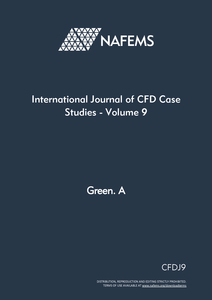 | The ninth volume of the Journal presents a selection of papers where authors have faced the task of using CFD where industrial engineering reality demands additional thought or application. Each paper presents models or techniques to extend or enhance the standard CFD modelling. |
The paper by Kahrimanovic et al deals with the design of high temperature duty cyclones where the wall roughness model is extended to account for joints between the refractory brick lining.
The heat transfer in an automotive headlamp, discussed in the paper by Mielke et al, requires an approach where CFD is conjoined with other software to simulate the high levels of thermal radiation.
The increasing trend of replacing expensive experimental tests by simulation or “virtual testing” is contributed to in the paper by Sayma. Here a method is proposed that allows for the simulated variation of rotationalspeed and throttle changes of a gas turbine compressor, mimicking its performance in a test rig.
The paper by Schöck et al deals with the laminar mixing of highly viscous fluids where,with normal methods, numerical diffusion would dominate the actual molecular diffusion. A trajectory method is applied to overcome this limitation.
The simulation of industrial paint dryers requires accurate heat transfer methods when applied to complicated shapes. The difficulty in industrial applications is selecting the right turbulence model and deciding appropriate local wall mesh density. This is discussed in the paper by Yeet al.
Information
| Reference: | CFDJ9 |
| Author: | Green. A |
| Published: | 1st June 2011 |
| Audience: | Analyst |
| Language: | English |
| ISSN: | 1462-236X |
| ISBN: | 978-1-910643-94-5 |
| https://doi.org/10.59972/e09jcgj1 | |

Stay up to date with our technology updates, events, special offers, news, publications and training
If you want to find out more about NAFEMS and how membership can benefit your organisation, please click below.
Joining NAFEMS© NAFEMS Ltd 2025
Developed By Duo Web Design